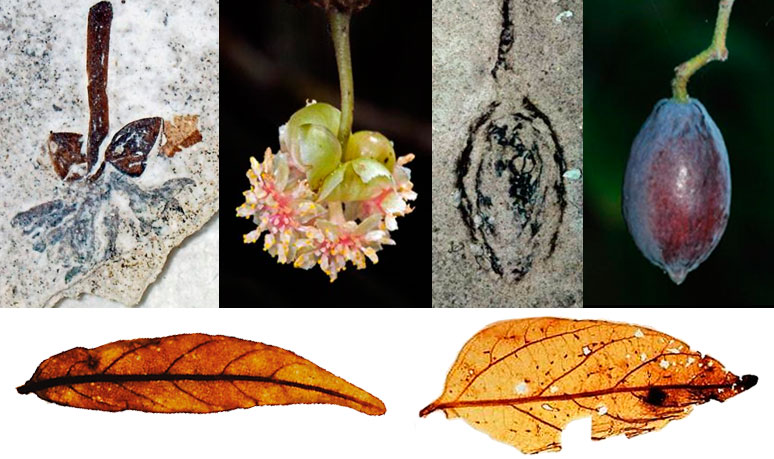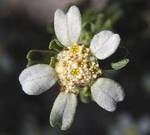We regret to announce that due to lack of venue, the It’s All About The Plants seminar on 4 March, 2014 has been cancelled. The following seminar will take place on 1 April, 2014.
Category Archives: It’s All About the Plants
Stroll around a palaeolake in a New Zealand sub-tropical rainforest
It’s All About the Plants
Tuesday, 4 February 2014—10:00–12:00
Goodman Building Lecture Theatre
by Dr John Conran (Associate Head of School)
School of Earth and Environmental Sciences, The University of Adelaide
The flora surrounding the early Miocene (23 Ma) Foulden Maar palaeolake included a highly diverse Lauraceae-dominated rainforest with macro- and/or microfossils of now extinct species of epiphytic ferns, a wide range of gymnosperms, 10 species of Lauraceae, and numerous other angiosperms typical of present-day New Zealand ecosystems, including diverse monocots. The macrofossils include leaves, flowers, fruits and seeds and in several cases are sufficiently detailed to allow placement onto cladograms with putative modern relatives, improving the phylogenetic significance of the fossils and their utility for dating evolutionary trees (e.g. Fuchsia, Laurelia, Luzuriaga). Comparisons with the ecology of modern relatives to the fossils at the site suggest that the forest included canopy trees, understorey shrubs, epiphytes, mistletoes, ferns, and vines, as well as forest margin pioneers and emergent aquatic macrophytes. The rainforest supported a mixture of wind-, bird- and insect-pollinated species, as well as both animal- and wind-dispersed fruit and seed types.
The palaeoforest most closely resembled a warm temperate to subtropical notophyll vine forest, but was comprised of what are now Australian, New Zealand, South American and New Caledonian elements. CLAMP (Climate Leaf Analysis Multivariate Programme) analysis of fossil leaf morphology at the site also suggests that SE Queensland rainforests are the nearest living climatic proxy. Apparent differences between the in situ macrofossils and the microfossils can be explained partly in terms of local versus regional scales, as well as variation in the soils and underlying geology surrounding the maar. The possible ecology, climate and habitats at the palaeolake and their implications are discussed in terms of the diversity and uniformity of mid-latitude southern New Zealand at the Oligocene–Miocene boundary.
All Herbarium staff, honoraries, volunteers and students are welcome.
Morning tea provided.
[cite as: Southern New Zealand at the Oligocene–Miocene boundary: floristic and palaeoecological characterisation of Foulden Maar.
John G. Conran1, Daphne E. Lee2, Jennifer M. Bannister3 and Dallas C. Mildenhall4
1ACEBB & SGC, School of Earth & Environmental Sciences DX 650 312, The University of Adelaide, SA 5005 Australia; 2Department of Geology, University of Otago, PO Box 56, Dunedin; 3Department of Botany, University of Otago, PO Box 56, Dunedin; 4GNS Science, PO Box 30368, Lower Hutt]
Seminar dates for 2014
The State Herbarium of South Australia’s seminar series It’s all about the plants will continue next year. The talks will again take place in the Botanic Garden’s Goodman Building Lecture Theatre (Hackney Road, Adelaide) on the first Tuesday of every month, except January and December, from 10:00–12:00.
The dates for 2014 are:
4 February, 4 March, 1 April, 6 May, 3 June, 1 July, 5 August, 7 October and 4 November.
Topics will be announced on this BLOG about two weeks before a seminar takes place, so stay tuned (and subscribe to get updates). All Herbarium staff, honoraries, volunteers and students are welcome.
New fungi species for South Australia
It’s All About the Plants
Tuesday, 5 November 2013—10:00–12:00
Goodman Building Lecture Theatre
by Pam Catcheside (Honorary Research Associate Mycologist)
State Herbarium of South Australia
As South Australia’s foremost fungi expert, Pam will share her considerable knowledge on the basics of identifying and describing different types of fungi and then show how she is applying these techniques to uncover new species in the State.
All Herbarium staff, honoraries, volunteers and students are welcome.
Fossilized leaf waxes reveal the effects of ancient global warming on plants
It’s All About the Plants
Tuesday, 1 October 2013—10:00–12:00
Goodman Building Lecture Theatre
by
Dr Cesca (Francesca) McInerney, ARC Future Fellow
School of Earth & Environmental Sciences, University of Adelaide
Dr. McInerney’s research focuses on reading isotopic signatures from the rock record to understand the influence of past climate changes on ancient ecosystems. In particular, she is interested in how plant communities and terrestrial biogeochemical cycles reacted to periods of global warming in the geologic past as a potential analogue to future climate change impacts.
Specifically, she analyzes the stable isotopic composition of fossilized leaf waxes to reconstruct past climates and ecosystems. These leaf waxes are essentially molecular fossils that retain information for millions of years about the plants that made them and the environments they lived in. In order to interpret these ancient chemical signatures, McInerney also studies modern plants and soils as a means of calibrating the isotopic tools she applies to the geologic record.
All Herbarium staff, honoraries, volunteers and students are welcome.
Morning tea provided





You must be logged in to post a comment.